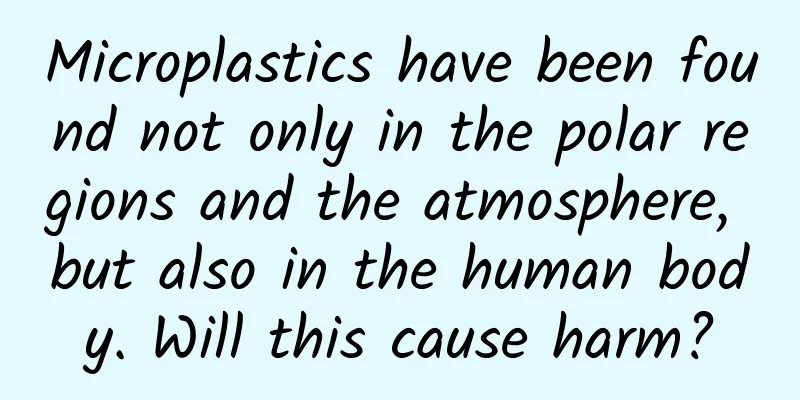How to pour the perfect beer while watching a game?

|
Author: Li Cunpu, Associate Professor, College of Chemistry and Chemical Engineering, Chongqing University Editor|Chen Tianzhen Every time there is a football match, the joy and troubles brought by football, as well as all the experiences in life, a glass of beer is needed to comfort us. The question is, how can we pour a perfect glass of beer? Next, we will explore this issue from a scientific perspective. The perfect beer flavor ——Determined by bubbles The taste of beer comes from two factors: (1) The higher the CO2 content in the drink, the more calories it takes away and the stronger the refreshing feeling. That is, the higher the CO2 content and preservation degree, the better the taste. (2) The lower the loss of flavor substances inside the beverage, the richer the flavor of the beverage and the better the taste. CO2 foam can cover the surface of the beverage liquid and reduce the loss of volatile flavor substances. In other words, the more bubbles, the better. The above two taste factors are both related to the loss of CO2, but they are contradictory: to retain a high degree of CO2, it is necessary to minimize the bubbles produced when pouring into the cup; and to reduce the volatilization and loss of flavor substances, it is required to increase the production of bubbles. Therefore, as shown in the beer taste volcano chart below, the appropriate number of CO2 bubbles is the key to the taste of a glass of beer. Volcano chart of the number of bubbles and flavors of poured beer Controlling the number of bubbles, the cup is the key The glass you choose will largely determine how much fizz is created when you pour your beer. A more direct way to select cups is to choose the cup material based on the strength of the interaction between the cup wall and CO2 molecules. Unfortunately, according to the national standard GB/T 4927-2008 (beer), the CO2 mass fraction in beer must reach 0.35-0.65% to be qualified. The CO2 content in beer is so low that the number of CO2 molecules that directly contact the cup wall when poured into the cup will be very small, making it difficult to really affect the generation of CO2 bubbles. On the other hand, the collision between water molecules and the wall will affect the molecular movement of CO2, which in turn affects the generation of CO2 bubbles. If you try to pour beer into a disposable plastic cup and a dry glass cup, you will find that the number of bubbles generated in the plastic cup is much greater than that in the glass cup. Plastic cups are often made of hydrophobic polymer materials, such as polypropylene and polyester, which are highly hydrophobic and will cause water molecules to move faster. The accelerated movement of water molecules will collide with the CO2 molecules in the beer, causing the CO2 molecules to aggregate into bubbles and overflow the system, forming foam covering the surface of the beer. As for glass, the chemical composition of its surface determines that CO2 bubbles are generated relatively slowly: it can get close to water, but only a little bit. As shown in the figure below, because the main component of glass is silicon dioxide, we can assume that the surface of the glass is mainly composed of silicon-oxygen (Si-O) bonds. In a clean, dry glass, the surface of the glass is mainly composed of suspended oxygen atoms (-O). As the wettability of the glass surface increases, the suspended oxygen atoms will gradually transform into hydroxyl groups (-OH bonds). As the oxygen atoms are gradually wetted and transformed into hydroxyl groups, the hydrophilicity of the glass wall gradually increases because the hydroxyl groups can form sufficient hydrogen bonds with water molecules. The silicon-oxygen bonds on the surface of the glass determine its hydrophilicity. The more hydrophilic the glass surface is, the stronger the attraction between water molecules and the cup wall when beer is poured in, and the movement of water molecules themselves will not be significantly enhanced, making it difficult to collide with a large number of CO2 molecules. Therefore, it is easier to control the amount of foam in a glass cup than in a plastic cup, and obtain excellent beer taste and flavor. Beer tastes better when poured into a glass. |[1] The second beer is perfect There is an old Chinese saying: A little drinking makes you happy, but getting drunk hurts your body. In fact, because the hydrophilicity of the glass increases with the degree of wetting, the second glass of beer is often the one with the best taste: A dry glass is not hydrophilic enough and will produce too many bubbles, while a completely wetted glass wall will produce too few bubbles. Only a partially wetted glass can produce "moderate" bubbles. By the time of the second beer, the wall of the glass has experienced the first wetting, and the hydroxyl density on the surface is about 5 per square nanometer, which has the most suitable hydrophobicity. In the laboratory, I investigated the changes in the hydrophilicity of plastic and glass surfaces. As can be seen from the following figures, (a) shows a plastic surface with obvious hydrophobic properties, and (bd) show glass surfaces that were dry, wetted once, and wetted twice. It can be clearly observed that the hydrophilicity of the glass surface gradually increases with the increase in the number of wetting times. As the number of wetting increases, the hydrophilicity of the glass surface gradually increases. | Photo provided by the author Practical tips for pouring the perfect beer Although different beer ingredients and different contents of yeast, protein, etc. will affect the final taste and foam density of the beer, we can also provide the best pouring method to make every glass of beer have the best taste. First, don't choose plastic cups. As mentioned earlier, plastic cups produce too many bubbles and lack a sense of ceremony. Secondly, clean the glass carefully. Beer contains organic molecules such as protein, so you must clean it carefully every time you finish drinking beer to prevent hydrophobic grease and other organic matter from covering the glass surface, increasing the hydrophobicity of the glass wall and causing excessive bubbles. Third, moisten the glass with pure water before drinking the first glass. Every glass of beer should be respected, and pre-moistening the glass can ensure that the first glass of beer also has the best number of bubbles, giving us the most perfect taste. Fourth, pour the beer close to the wall of the glass. Pouring the beer close to the wall of the glass can minimize the disturbance of the beer liquid, thereby reducing the rapid and large-scale generation of bubbles. Fifth, don’t drink too much, and minors are prohibited from drinking. References [1] Xiafan. https://www.bilibili.com/bangumi/play/ss27152/ [2] General Administration of Quality Supervision, Inspection and Quarantine of the People’s Republic of China, Administration of Standardization of the People’s Republic of China. Beer: GB/T 4927-2008[S]. 2008. [3]J. Phys. Chem. B 2018, 122, 4573 |
<<: An alien spaceship passed through the solar system. Scientists plan to catch up with it.
Recommend
7-year-old boy went to hospital after playing games and crossing eyes? Be careful with this kind of behavior in children!
In an era when electronic products are becoming i...
The key node of the fission and fan growth activity!
In the circle of increasing fans, fission is like...
Android is not secure, Google is not clear
The twenty-six letters of the alphabet have all b...
Why is tickling contagious?
Produced by: Science Popularization China Author:...
Be careful! 9 ways to accidentally expose your information
Recently, the media reported that nearly 80% of I...
APP channel promotion: 3 major channels and experience sharing!
As the Matthew effect in the industry deepens, it...
How to set up WeChat Tap? How to set the suffix and add text to WeChat Tap?
After the update, WeChat has a "Tap" se...
Android uses Retrofit 2 to implement multiple file uploads
Some time ago, I translated Future Studio's R...
What is the most profitable thing at the moment? What is the fastest and most stable way to make money?
What is the most profitable thing at the moment? ...
BMW to pay $478 million for water damage to trunk power components
According to foreign media reports, BMW Group ann...
If you take a sip of milk tea like this, you are also inhaling this chemical substance that will not degrade for hundreds of years | Expo Daily
If you take a sip of milk tea like this, you also...
It's more fun in all aspects! Detailed experience of the new version of mobile QQ
Have you tried the new "Party Together"...
What is the difference between Tik Tok fans and following? What are the minefields in Douyin operations?
This article mainly introduces the difference bet...
The hottest pepper has broken the record! Only 5 people in the world have eaten it
The world's hottest pepper has been renamed t...
5 steps to teach you how to quickly get started with Weibo channel operations
As the gossip center of the entire Internet, Weib...









